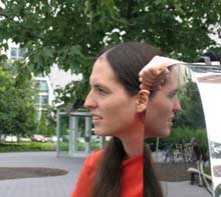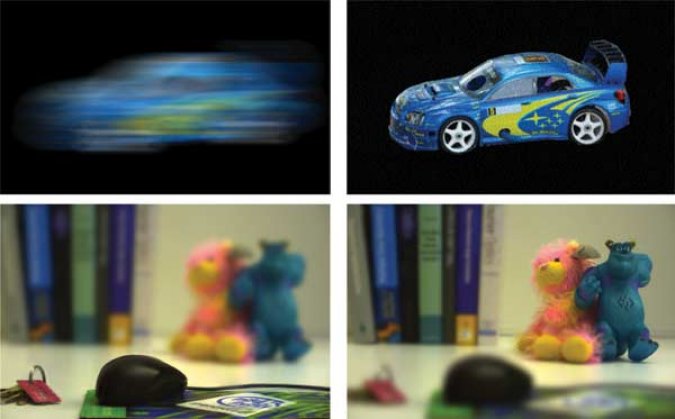
Although a digital camera is an impressive piece of equipment, it’s the same in its basic design as the old-fashioned film camera: a lens focuses an image on a plane. The digital camera simply captures that image with a light-sensing chip instead of film. Anat Levin thinks we can do more.
Levin, a senior scientist at the Weizmann Institute in Rehovot, Israel, is at the forefront of computational photography. She develops ways to manipulate digital images, both inside the camera and on computers. And increasingly, she is exploring new camera designs. “Before digital photography, we would capture images onto a film, and the film was more or less the end of the story,” she says. “Now, with digital photography, what we have on the camera is not the end of the process.”
Last year, Levin invented a camera and algorithm that, together, remove motion blur from an image. Paradoxically, the camera moves its sensor horizontally at a varying speed while the image is being exposed, which of course makes the whole image blurry. However, the camera's movement is specially designed to blur the moving and static parts of a scene equally, and by a known amount. Thus, she can use a relatively simple algorithm to remove the blur from all objects. A separate computer processes the image today, but a production model of the camera could eventually do the processing onboard.
Working with colleagues at MIT, Levin has also proposed a lens design that would give a camera greater depth of field, increasing the amount of a scene--near and far--that can be brought into focus at the same time. Square pieces cut from lenses with different focal lengths are superimposed over the regular lens. Each square focuses on an area a different distance from the camera. Using the information from all the lenses, Levin can recalculate the entire image to increase the depth of field, or even refocus on objects that are closer or farther away after the picture has been taken.

No more blur: The blurry image of a moving toy car was taken with a traditional camera. The clear image was taken with Levin’s modified camera. The camera's sensor moves from side to side during exposure, blurring all moving and stationary objects equally, no matter how fast each object is moving. Levin developed an algorithm that can remove this uniform blur to yield a clear image.
Source: “Motion-Invariant Photography” by Levin, Sand, Cho, Durand, Freeman.
A new focus: Levin and colleagues designed a lattice of different lenses that can be placed over a camera’s regular lens. Each lens focuses on an area a different distance from the camera. Using data from all the lenses, Levin can choose which part of the photo is in focus. In the image at left, the mouse is in the plane of focus and looks sharp. On the right, she has moved the plane of focus to the figurines in back.
Source: “4D Frequency Analysis of Computational Cameras for Depth of Field Extension” by Levin, Hasinoff, Green, Durand, Freeman.
